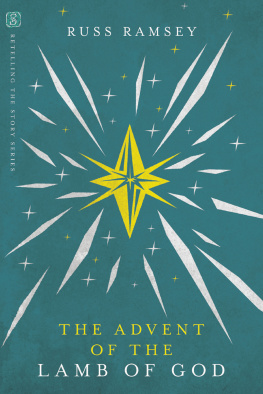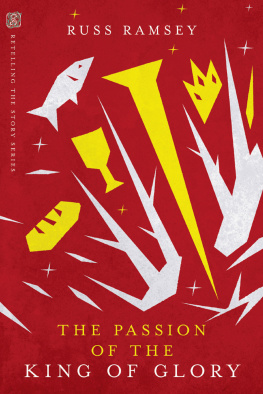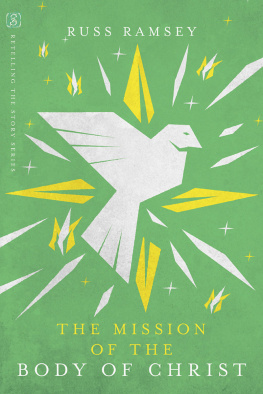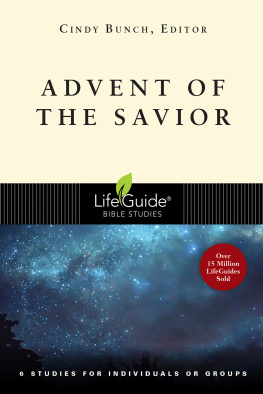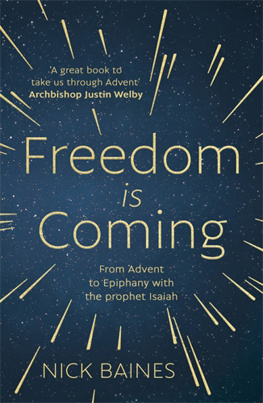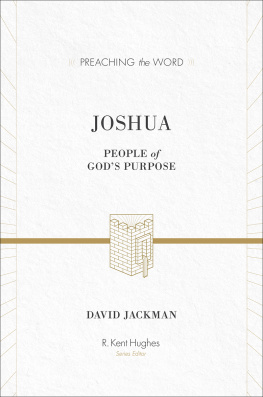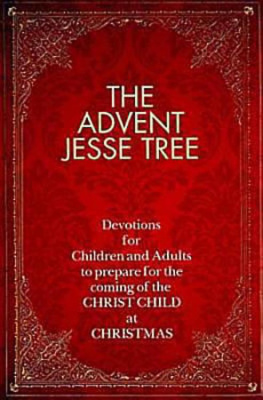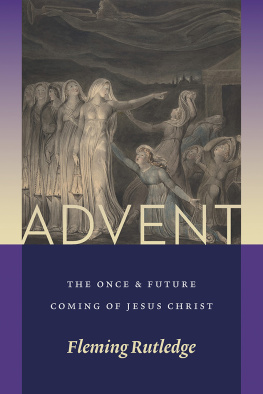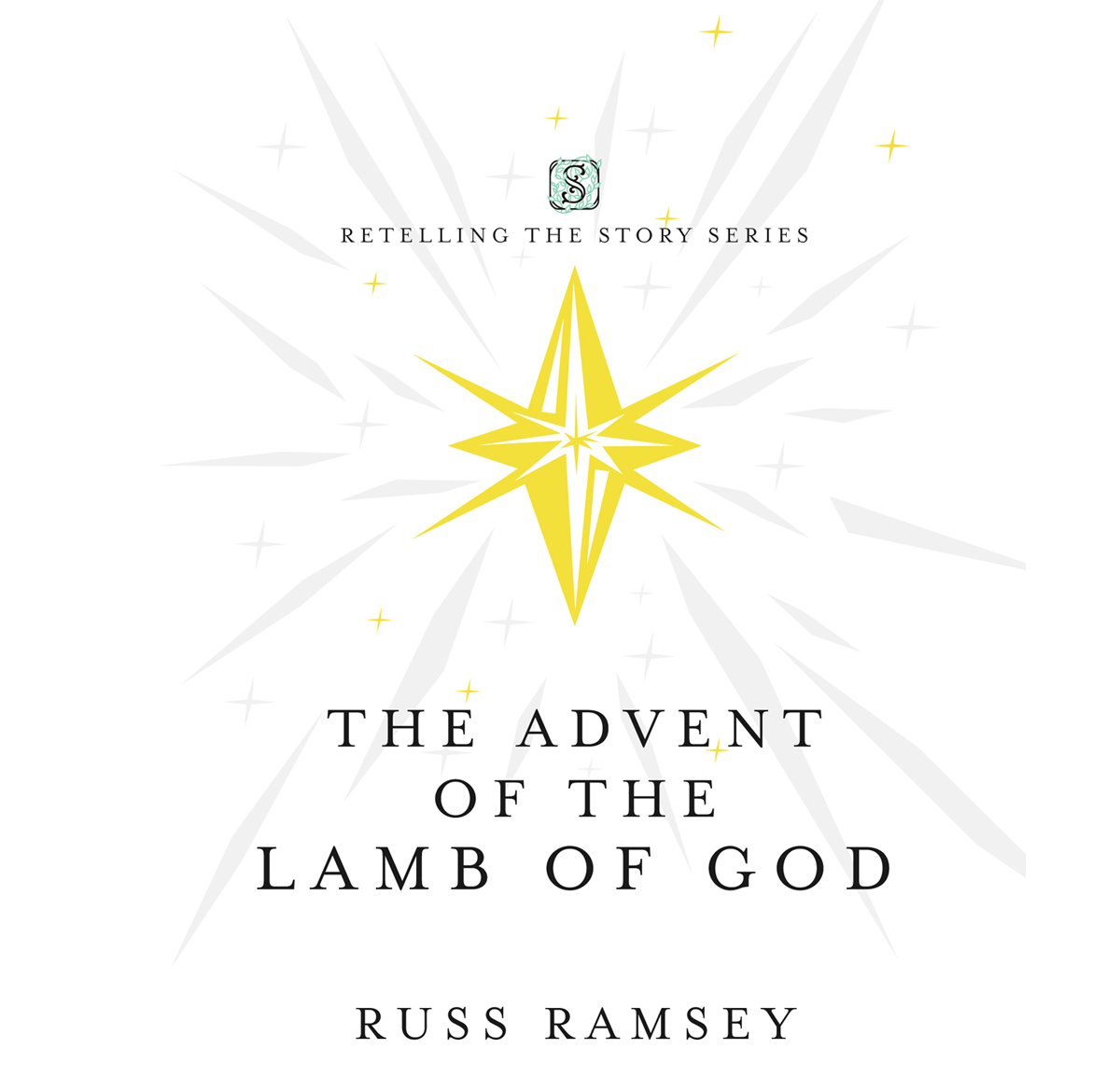Sommaire
Pagination de ldition papier
Guide
InterVarsity Press
P.O. Box 1400, Downers Grove, IL 60515-1426
ivpress.com
2018 by Russell Brown Ramsey
Originally published as Behold the Lamb of God by Rabbit Room Press in 2011.
All rights reserved. No part of this book may be reproduced in any form without written permission from InterVarsity Press.
InterVarsity Pressis the book-publishing division of InterVarsity Christian Fellowship/USA, a movement of students and faculty active on campus at hundreds of universities, colleges, and schools of nursing in the United States of America, and a member movement of the International Fellowship of Evangelical Students. For information about local and regional activities, visit intervarsity.org.
Scripture quotations, unless otherwise noted, are from The Holy Bible, English Standard Version, copyright 2001 by Crossway Bibles, a division of Good News Publishers. Used by permission. All rights reserved.
Published in association with the literary agency of Wolgemuth & Associates.
Cover design and illustration: David Fassett
Interior design: Jeanna Wiggins
ISBN 978-0-8308-8523-7 (digital)
ISBN 978-0-8308-4398-5 (print)
This digital document has been produced by Nord Compo.
FOR LISA, 
who tells me this story
with beauty and grace
every day.

AUTHORS NOTE
I N 2011, I RELEASED A version of The Advent of the Lamb of God under the name Behold the Lamb of God: An Advent Narrative. That edition was a kind of companion piece to Andrew Petersons beautiful Christmas record, Behold the Lamb of God: The True Tall Tale of the Coming of Christ. This book would not exist without that record or my friendship with Andrew. He has encouraged me to write and has helped me grow as a writer. This has been a hallmark of our friendship since the day he invited me to become a regular contributor to The Rabbit Room, a Christ-centered online community he started that fosters spiritual formation through music, story, and art.
Every Christmas season, Andrew and his band of amazing musicians take that record on the road. If you have the opportunity to see Andrews Behold the Lamb of God concert, I suggest you do so. Either way, get the record. It is a beautiful work of art.
Preface
TELLING A TRUE
TALL TALE
B ACK BEFORE FATHER ABRAHAM HAD ANY SONS, the God of the universe made him a promise. He would be the father of a great nation, and through him all the people of the earth would be blessed. One night God brought him outside his tent in the desert and said, Look toward heaven. Count the stars if youre able. So shall your offspring be.
I grew up hearing stories like this. But something came alive for me one night in college when I found myself in the Middle East, not too far from Abrahams desert, lying on my back, staring up at that same starry sky. In the desert, the night is a magnificent thing to behold. The Lord silenced me with his glory.
I thought about this oath God made to Abraham. Here was a man who, for his entire life, had been unable to have children with his wife, though Gods promise to him was all about descendants. I thought about how hard this would have been to accept, how improbable was the math. And then I pictured Abraham stepping out beneath the brilliant canopy of stars flung across the heavens, and I imagined the Lord silencing his doubt with the same glory he was now using to silence me.
What a mercy that must have been to Abraham, for God to meet him in his doubt with this display of glory. Though Abraham couldnt begin to count the stars above, his life was in the hands of the one who made them.
Every story God tells is filled with glory. Like Abraham beneath the stars, I want to see it. I want to be captured by the wonder of impossible promises coming true. I want to read the pages of Scripture with my eyes open to the beauty of mercy and grace.
I want this for you as well.
One of my highest hopes for this book is that it will deepen your understanding of the wonder and glory of the story of the Bible. Biblical literacy is one of the most important goals of my work as a pastor. I want people to know what the Bible says.
The challenge this book presented was this: How do I tell the story of Gods redemptive purpose in sending his Son in a way thats faithful to the text of Scripture, knowing I must abridge or omit many wonderful and important moments? This puzzle took me through the process of embracing what this book is and what it is not.
First, this book is not complete. My focus in this volume of the Retelling the Story series is specifically to tell the story of the need for and the coming of Christ, so Ive left a lot of Scripture untouched. For example, though I draw much from the teachings and language of Pauls Epistles, the scope of The Advent of the Lamb of God ends before Paul comes on the scene, so here I make no mention of this man the Lord used to write half of the New Testament. Pauls story is told in the third volume in this series, The Mission of the Body of Christ.
Also, this book is not a substitute for the Bible itself. In Deuteronomy, the Lord instructs his people to tell their children about him continuallywhen theyre tucking them in at night, when theyre walking down the road, when theyre sitting down to eat. They were to have the stories of Scripture posted everywhereon their doorposts, wrapped around their arms, emblazoned on their foreheads, woven into their conversations. There was the text of Scripturethe Law of Mosesand then there were the stories people told about it, those have you read the one about moments. This book is a collection of those moments.
Last, this book is not exclusively a Christmas book. We havent told the Christmas story well if weve limited its relevance to one month of the year. This book is designed to guide you through a contemplative season of Advent if you liketwenty-five chapters, one for each day of December up until Christmas Day. But I hope taking twenty-five days in June to read it will be just as meaningful.
Now I want to tell you what this book is.
This book is meant to be a servant of the Bible. Ive packed this book with hundreds of Scripture references. Let me explain how I use them. Throughout this book I paraphrase pretty freely in order to maintain a unified voice. Rarely do I quote Scripture directly or at length. This applies to character dialogue as well. If a character says something and theres a Scripture reference linked to it in the notes section, that doesnt necessarily mean Im quoting the original text. Im probably not. More than likely Im paraphrasing and distilling a larger moment in Scripture to work within the limits of this book. That said, those references are there to lead you to the truer, taller tale Scripture unfolds with perfect sufficiency.

